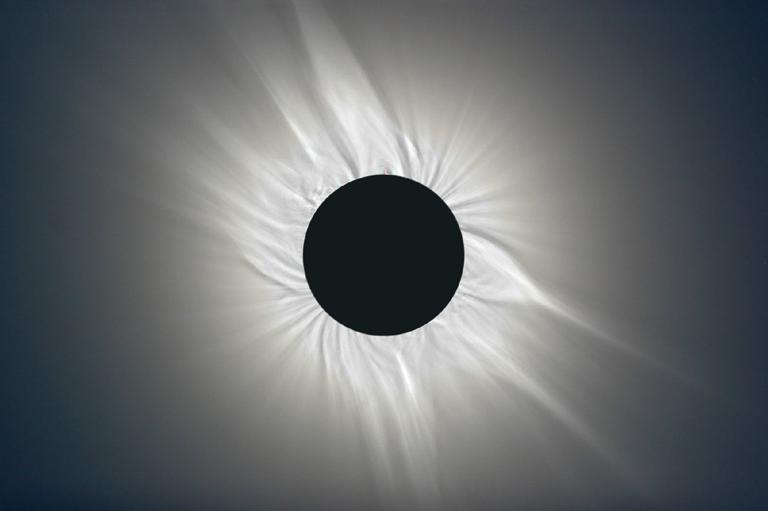The solar wind is a stream of matter particles ceaselessly ejected into space from the corona, the outermost atmosphere of the Sun. The solar wind is a kind of continuous plasma flow from the interior of the sun with the speed of 20~ 800 km/s. The flow of matter particles is released from the coronal hole and mainly consists of hydrogen particles and helium particles.
The solar wind can be divided into two types: one continuously radiates out in a slower way and with less particle content and is called "slow solar wind". The other radiates out with a high concentration of particles at a high speed when the sun is active. This kind of solar wind is called "fast solar wind".
The fast solar wind has a great impact on the earth. When it reaches the earth, it often causes large magnetic storms and strong auroras, as well as ionosphere disturbance. While the existence of solar wind provides us with important clues to study the relationship between the sun and the earth.
Before the 19th century, this kind of situation had no serious impact on human beings. But in the 20th century, it was found that magnetic storms affected radio reception and all kinds of electronic equipment. As people rely on more and more on these devices, magnetic storms become more and more crucial.
For example, during a magnetic storm, radio and television transmission would be interrupted, radar would not work and the satellites would be affected as well.
When the solar wind passes over the earth, it also changes the electromagnetic field causing geomagnetic storms, ionospheric storms and affecting communication, especially short-wave communication.
Solar wind will also convey the strong elementary charge to the power network and pipelines on the ground, affecting the safety of transmission systems of oil and gas.
The amount of radiation from a single solar wind can easily reach what multiple x-rays have for a person. It can also cause the decline in human immunity, which is easy to cause diseases, and it swings people's mood, resulting in even more car accidents. Another problem that everyone will notice is that when a solar storm occurs, the temperature will increase significantly.
Astronomers studied the sun's flash more carefully and found that in these eruptions hot hydrogen was apparently ejected far away, some of which would be ejected into space with the surmounting the great gravitational pull of the sun. Protons are the nuclei of hydrogen, so the sun is surrounded by a cloud of protons and a small number of complex nuclei. In 1958, American physicist John Parker called this up-welling cloud of protons a "solar wind."
Most of the incoming protons will be pushed away by the earth's own magnetic field when they reach the earth. Still, some enter the atmosphere and cause auroras and various phenomenon of electricity. A catastrophic eruption of powerful proton clouds in the direction of the earth will lead to the phenomenon of "solar storm" phenomenon, when magnetic storm effect can appear. This kind of "solar storm" is very powerful.
The solar wind provide the comets with their tails. When a comet is close to the sun, dust and gas around the star are blown backwards by the solar wind. This effect has also been demonstrated on artificial satellites. A satellite as big and light as Echo One would be obviously blown away from its predetermined orbit by the solar wind.

Comment list ( 0 )
